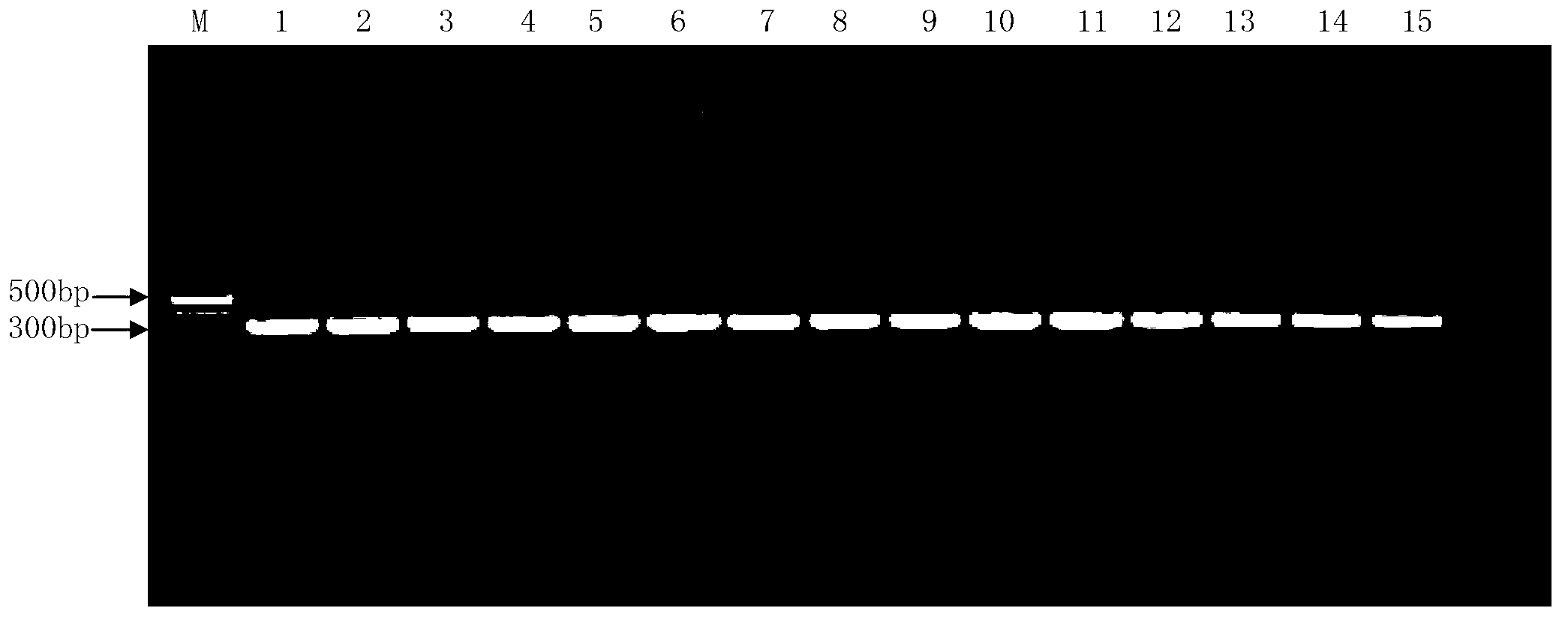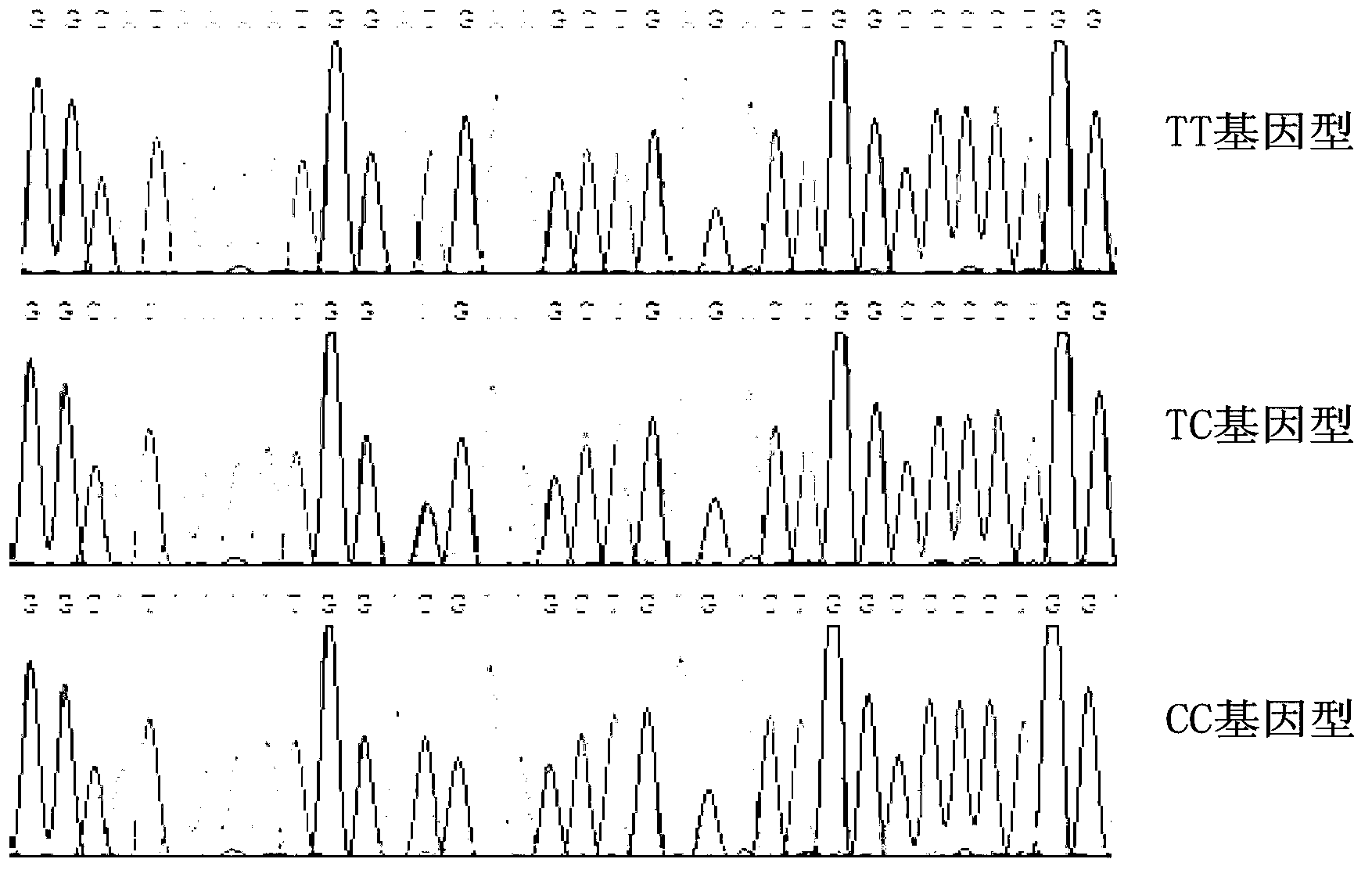Method for aided identification of fat tail properties of sheep and special molecular marker used therein
A technology of lipid tail traits and molecular markers, which is applied in biochemical equipment and methods, microbiological determination/inspection, DNA/RNA fragments, etc., and can solve problems such as extinction, unpopularity, and uneconomical principles of tail fat deposition
- Summary
- Abstract
- Description
- Claims
- Application Information
AI Technical Summary
Problems solved by technology
Method used
Image
Examples
Embodiment 1
[0025] Embodiment 1, design and synthesis of specific primer pair
[0026] Based on a large number of sequence alignments, analysis and preliminary experiments, design specific primer pairs as follows:
[0027] F (upstream primer, sequence 1 of the sequence listing): 5'-AGGTAGGGAGATTATCCAGGGAG-3';
[0028] R (downstream primer, sequence 2 of the sequence listing): 5'-ACAGCAGGGTTCTCTGCTCAGAG-3'.
Embodiment 2
[0029] Example 2, Application of specific primers to identify the relationship between polymorphism and traits
[0030] 1. Extract the genomic DNA of the sample to be tested, use the Nanodrop2000 instrument to detect the purity and concentration of the DNA sample, select the DNA sample with an OD260 / OD280 ratio between 1.7-1.9, and add ddH 2 O was diluted to 100ng / L and stored frozen at -20°C.
[0031] 2. Using the genomic DNA extracted in step 1 as a template, the specific primer pair designed in Example 1 is used for PCR amplification.
[0032] PCR reaction system (25μL): template 100ng, 10×PCR buffer 2.5μL, 2.5mmol / L MgCl 2 , 150mol / L dNTPs, upstream primer 0.2pmol / L, downstream primer 0.2pmol / L, Taq DNA polymerase 2.5U, add ddH 2 0 to 25 μL.
[0033] PCR reaction conditions: pre-denaturation at 94°C for 5 minutes; 35 cycles of 94°C for 30s, 60°C for 30s, and 72°C for 30s; extension at 72°C for 10 minutes; storage at 4°C.
[0034] 3. Take the PCR amplification product o...
PUM
 Login to View More
Login to View More Abstract
Description
Claims
Application Information
 Login to View More
Login to View More - R&D
- Intellectual Property
- Life Sciences
- Materials
- Tech Scout
- Unparalleled Data Quality
- Higher Quality Content
- 60% Fewer Hallucinations
Browse by: Latest US Patents, China's latest patents, Technical Efficacy Thesaurus, Application Domain, Technology Topic, Popular Technical Reports.
© 2025 PatSnap. All rights reserved.Legal|Privacy policy|Modern Slavery Act Transparency Statement|Sitemap|About US| Contact US: help@patsnap.com



